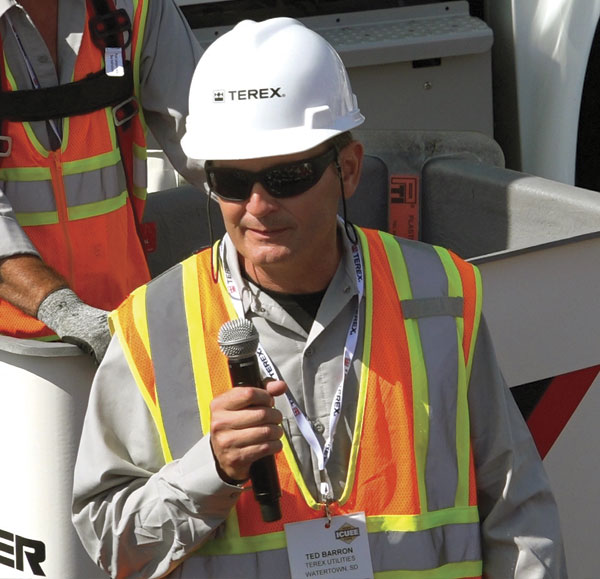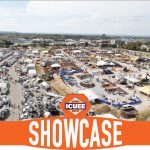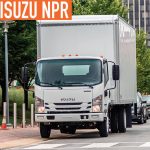This month we’re talking about green fleets and alternative fuels. Money saved on fuel and gas mileage are often the focus of green fleets, but let’s talk about something broader. What happens when you need to run an application on a utility truck? Ted Barron of Terex Utilities is here to answer all our questions about a utility fleet using alternative fuels.
MWS: WHY IS IT IMPORTANT THAT UTILITY FLEETS CONSIDER ALTERNATIVE SOLUTIONS FOR FUEL REDUCTION AND TO PROMOTE THE GREEN EFFORT?
BARRON:
I believe there are really four parts to that answer: 1) All businesses look for ways to become more efficient. Who doesn’t want to reduce fuel costs if it results in an overall savings? 2) In order to operate fleets in some metropolitan areas there are mandates in place, and more coming, to reduce emissions. 3) Air quality in metropolitan areas is an issue. As the area’s population increases, cleaner and more efficient services provided by fleet companies will help stave off air quality issues and potential air quality alerts. 4) If your company is in the business of providing one of these alternate fuels, then demonstrating that solution is strategically important.
MWS: WHAT PRODUCTS DOES TEREX OFFER THAT HELPS COMPANIES ACHIEVE A GREEN FLEET?
BARRON:
Terex introduced the original HyPower™ Hybrid system in 2007 and the HyPower IM in 2017. They are plug-in systems that use battery power to eliminate engine run time. The HyPower Hybrid was designed to operate the Terex unit at a jobsite without running the engine. The HyPower IM idle mitigation system was designed as a lighter, less expensive system that uses lithium ion batteries to run the typical Terex aerial device for use in a service application. Most of the time the engine is idling and the boom is not moving when an aerial device is working a job. The IM system shuts down the engine and uses the electricity stored in the batteries to keep the aerial device ready to respond. When the operator needs to operate the unit, the system responds with battery power and runs the unit at normal flow for up to 30 seconds. If the operator needs more run time, the engine cranks to provide power to the hydraulic system and, if the batteries are below 70% charged, recharges the batteries.
MWS: THE HYPOWER IM IS FOR WHAT TYPE OF FLEET CUSTOMER?
BARRON:
The HyPower IM is perfect for our 35–50-ft LT and TL-Series aerial devices, which are typically mounted on a Class 5–7 chassis. The HyPower IM system works well on trouble trucks that spend short periods of time at many work locations during one day. The HyPower IM is lightweight and non-intrusive. If there is a problem with the system, the Terex unit and chassis are still able to go out and get the job done.
Terex Utilities developed the HyPower IM to be a seamless idle mitigation system. Utility jobs demand recurrent training and constant attention to the job at hand. Our goal is to provide equipment that responds automatically, allowing the operators to concentrate on the task they are assigned.
MWS: WHO BENEFITS MOST FROM THE HYBRID SYSTEM?
BARRON:
For customers that want greater kWh capacity, the legacy Terex HyPower Hybrid systems are available for all-day boom operations. HyPower 5 and HyPower 7 systems for trouble trucks allow boom operation, lights, and flashers, as well as exportable power without starting the vehicle’s engine. An optional cab comfort feature is also available.
MWS: WHAT SEPARATES TEREX SYSTEMS FROM THE COMPETITION?
BARRON:
Reliability. It doesn’t matter how clean or efficient a solution is if it doesn’t actually go out and replace a truck that reliably does the job. The rate chassis technology changes is a challenge for any company integrating its equipment onto new chassis. Add multiple chassis manufacturers with multiple options and the challenge grows exponentially. Minimizing the interfaces electronically and mechanically increases reliability. That’s what we did with the HyPower Hybrid and HyPower IM systems.
MWS: WHERE DO YOU SEE THE BIGGEST FUTURE CHALLENGES FOR GREEN UTILITY FLEETS?
BARRON:
One of the biggest challenges OEMs face is the current available battery technology. Cost, capacity, weight, performance in extreme temperatures, heat generated by the system, and packaging considerations for installation on the truck chassis are all factors to consider when designing electric mobile equipment.
Lithium-ion technology took us a long way, even with its limitations. Because it’s lightweight and its price continues to drop, we can affordably increase battery capacities without jeopardizing payload capacities. Lightweight lithium-ion moved us ahead from where we were 20 years ago, relying on lead-acid batteries. It will be interesting to see where the next battery advancement leads us.
MWS: MANY MANUFACTURERS PLAN TO OFFER FULL-ELECTRIC CHASSIS IN THE NEAR FUTURE. HOW WILL THAT AFFECT TEREX UTILITIES?
BARRON:
We can easily run our equipment off that platform today, and we would like to. Even though that technology is in the trucking industry, migrating that technology to the mounted equipment market may take a while. In that interim period we will continue to provide battery powered technology to fill the gap.
MWS: THERE ARE ALSO CHALLENGES WITH THE ELECTRIC GRID, AS A FORMER EMPLOYEE AT A MAJOR IOU (INVESTOR OWNED UTILITY) HOW DO YOU SEE THAT PLAYING OUT?
BARRON:
When we talk about entire fleets running on electricity and all charging at the same time, that is a huge challenge! The grid has seen many challenges through the years, and it continually evolves, adapts, and responds. Not because it is smart, but because there are a lot of smart, resourceful people who historically, continuously, and with sole purpose and dedication made it do that. Having known and worked with some of those people, I bet they can overcome that challenge.
MWS: WHAT’S NEXT FOR TEREX?
BARRON:
We continue to integrate our hydraulic equipment with CNG and LNG platforms upon request and look forward to the day we can integrate with fully electrified chassis platforms. Until electrified chassis platforms arrive, Terex continues to invest in technologies that allow the boom to run without the engine. No matter what, we know reliability has to be the main parameter around any piece of equipment or system we design. We recently introduced our TL-80 and TL-100 that provide a lighter boom to get linemen higher in the air. The TL-80 can even go on a single axle chassis. These lighter booms reach the same height and provide the same structural rigidity as other booms—not to mention the additional fuel savings. One thing we continue to support and develop is the interconnectivity of utility equipment that communicates important data to users, helping them drive efficiencies across their entire fleet.
FOR MORE INFORMATION
Ted Barron is vertical market manager for Terex Utilities. He is heavily involved in new product innovation, development, and marketing. He currently serves as chairman on the Green Truck Association’s Board of Governors, an affiliate of the National Truck Equipment Association. Barron’s 27-year background in Fleet Engineering and Fleet Management at a large utility and his current role with Terex Utilities provides a combination of perspectives, which he shares in service to other industry groups, such as GTA and ANSI.
MODERN WORKTRUCK SOLUTIONS:
OCTOBER 2019 ISSUE
Did you enjoy this article?
Subscribe to the FREE Digital Edition of Modern WorkTruck Solutions magazine.





